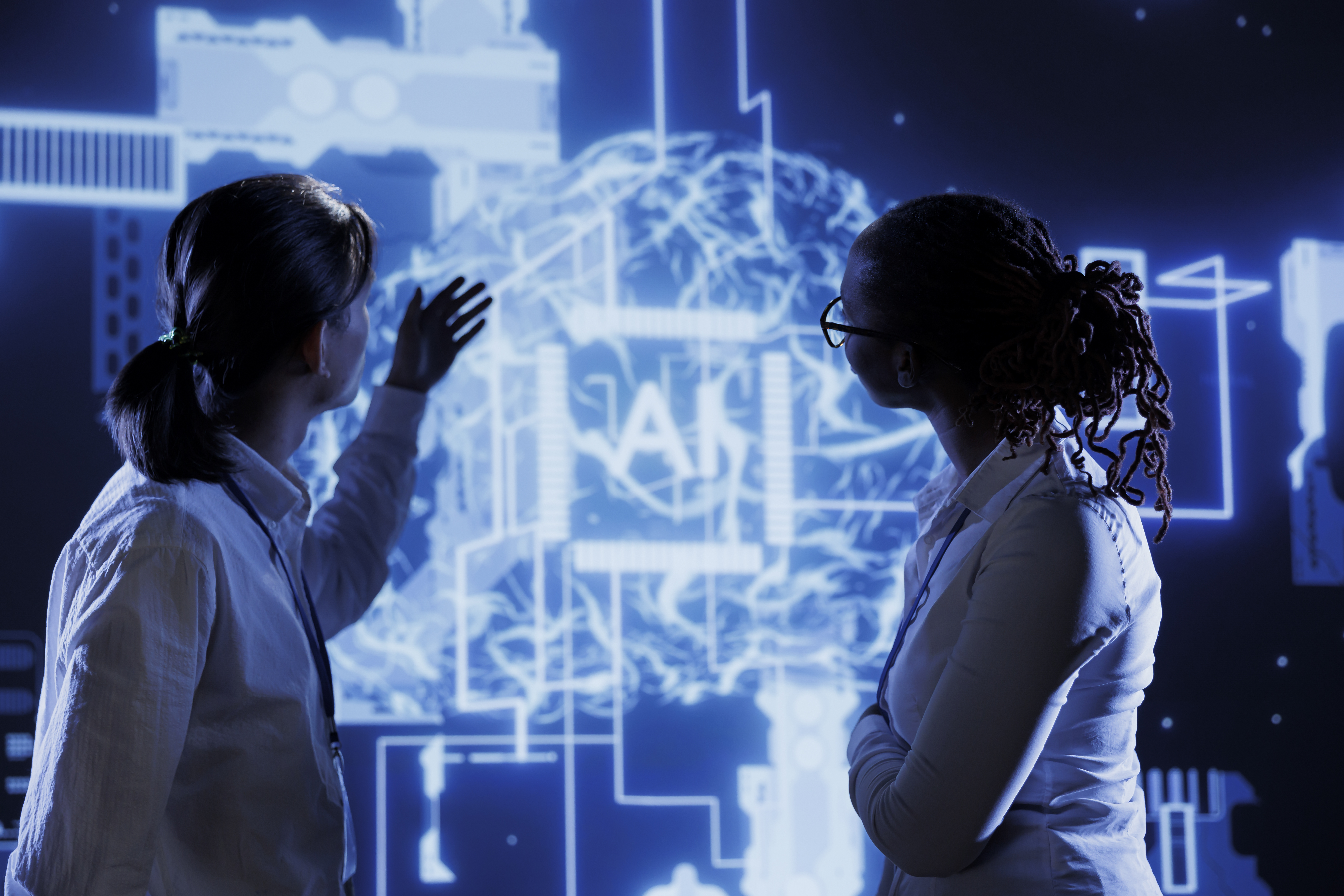Artificial Intelligence (AI) in Education
By Dr. Mark Taylor, Christian School and College/University Representative | 18 Mar 2024

Have you heard about AI? AI is short for artificial intelligence. “Artificial intelligence (AI) is the theory and development of computer systems capable of performing tasks that historically required human intelligence, such as recognizing speech, making decisions, and identifying patterns. AI is an umbrella term that encompasses a range of technologies, including machine learning, deep learning, and natural language processing NLP).”1
One form of AI is ChatGPT. “The GPT in ChatGPT is short for generative pre-trained transformer. In the field of AI, training refers to the process of teaching a computer system to recognize patterns and make decisions based on input data, much like how a teacher gives information to their students, then tests their understanding of that information.”2
All this new technology!
Technology has advanced significantly in the 43 years I have been involved in education. When I started my education career, I was still using a typewriter, periodical indexes, 16mm projectors, chalkboards, filmstrips, cassette players, and overhead projectors. We did not have online capabilities. We did not have personal computers, educational software, search engines, cell phones, etc.
Some of the ongoing technological developments help society in so many ways, especially those advancements in medicine, transportation, energy, communication, robotics, etc. These technologies have advanced to the level of AI. How are we to manage and appropriately utilize the advancements and tools of AI in education?
Understand what AI is and what it encompasses.
At the outset of this article, I shared a definition of AI and a form of AI known as ChatGPT. Common examples of AI in everyday life include features like facial recognition, self-driving cars,
online shopping, cybersecurity, personal digital assistant (PDA), smart technologies for the home, Siri, banking, text editing, etc. Two more recent chat-based AI are now available from two major software programs used in educational settings. Google now has BardGPT.
Microsoft now has BingAI (access through the Bing search engine). I recently set up an access to Google’s Bard and was tempted to have BardGPT write this article.
Understand the potential benefits to education.
Akash Takyar wrote an informative article for the Leeway Hertz software company website titled, “Building Smarter Classrooms: The Benefits and Use Cases of AI in Education”.3 He lists six major benefits of AI in education:
1. Predictive analytics
2. Enhanced student engagement
3. Efficient administrative tasks
4. Instant feedback and support
5. Data-driven insights
6. Inclusive education experience.
He also discusses some future AI trends in education. They include increased personalization; seamless integration with learning management systems (LMS); gamification; augmented and virtual reality; predictive analytics; automated grading; natural language processing (NLP); smart content.
Understand the potential challenges to education.
Use of AI in education may encounter challenges such as excessive costs; students’ dependency on AI to do their thinking; incorporating ethics and morality to the process; disregard for creativity; and data security.
Develop guidelines and policies for use of AI.
Schools need to develop guidelines and policies to address the potential dangers or concerns
regarding AI. Students are already using AI — for example, instead of learning how to write a paper, they could tell ChatGPT to write their paper or speech. Students must be provided with clear instructions regarding the boundaries to using AI to do their classwork.
Some innovative teachers are already incorporating AI into their teaching. I would recommend an article, “How to Enact an AI Policy in your K-12 Schools” by Bryan Krause4 to help you create fair and thoughtful policies. Also, the website tech.ed.gov has some excellent resources on AI and helpful recommendations to help you create your policy. Additionally, The White House has published its Blueprint for AI Bill of Rights (whitehouse.gov).
Concluding Thoughts
If you want to learn more about AI, Coursera has included free courses online.
I read about a pastor who decided to use AI ChatGPT to create an entire church service. The pastor wanted to understand AI and see if it could be incorporated into the church’s technology use. ChatGPT put together all the elements, including the pastor’s sermon and the children’s message. However, there is one thing that ChatGPT is powerless to do — AI cannot replicate the empowerment of the Holy Spirit.
Footnotes
1. Coursera. "What is Artificial Intelligence? Definitions, Uses, and Types" (2023): https://www.coursera.org
2. Coursera. What is ChatGPT? (2023): https://www.coursera.org
3. Akash Takyar, "Building Smarter Classrooms: The Benefits and Issues of AI in Education" (2023). http://www.leewayhertz.com
4. Bryan Krause, "How to Enact an AI Policy in your K-12 Schools" (2023). https://www.edtechmagazine.com
Dr. Mark Taylor lives in Ferguson, Missouri. He retired as a professor of education and the department chair of Social and Behavioral Sciences/Teacher Education at St. Louis Community College in St. Louis, Missouri. He serves on the school board of North County Christian School. You may contact Mark at mltaylor@stlcc.edu.
[ST1]Does not allow me to edit this. These are numbered as footnotes in the text. Please follow GMC style guide format, p.27, on COTN portal.
1. Zadie Smith, Swing Time (New York: Penguin Press, 2016), 315–16.
